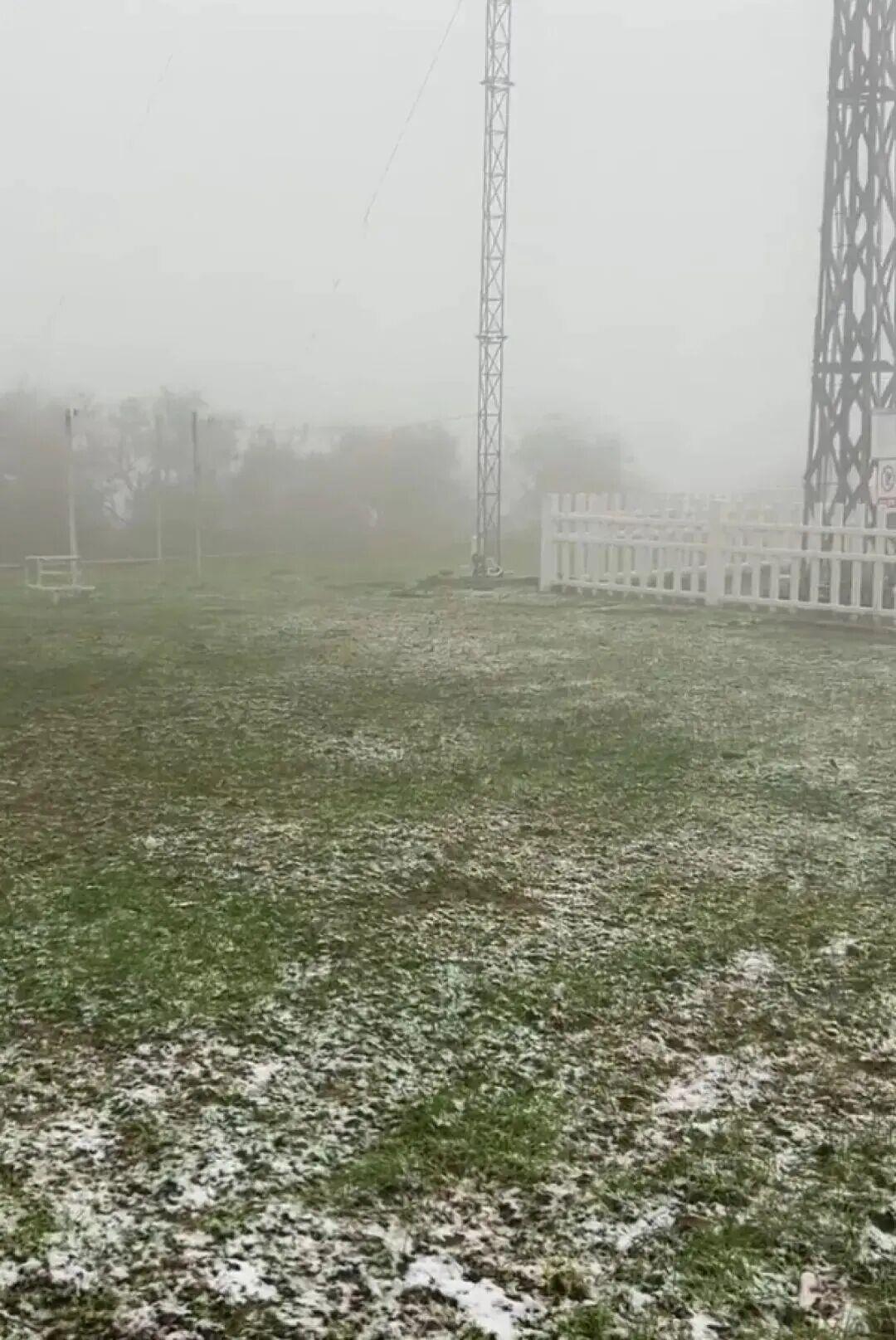The strongest cold air mass of the second half of this year
Continues to push northern regions into winter
Some areas in Zhengzhou and Luoyang, Henan Province
Already experienced snowfall
Snowfall at Songshan Mountain in Dengfeng
Expert Analysis
A weak La Niña event may form
This autumn and winter
According to recent ocean and atmospheric monitoring data, the National Marine Environmental Forecasting Center predicts that this winter, sea temperatures in China’s Bohai Sea and southern East China Sea are expected to be slightly higher by 0.5°C to 1°C, while the Yellow Sea and central and northern East China Sea are expected to be 1°C to 2°C higher than normal. Most areas of the South China Sea will maintain sea temperatures close to the annual average.
Experts also stated that based on monitoring, the equatorial central and eastern Pacific will remain in a neutral-to-cool state this autumn and winter, potentially forming a weak La Niña event.
In the ocean, several important sea temperature monitoring areas have been designated, with the Niño 3.4 region index used to monitor El Niño and La Niña phenomena. When this index remains below -0.5°C for five consecutive months, a La Niña event is considered to have formed, while the opposite indicates an El Niño event.
Will La Niña bring an extremely cold winter?
A La Niña event refers to the phenomenon where sea surface temperatures in the equatorial central and eastern Pacific become abnormally cold over a large area, with intensity and duration meeting specific conditions.
During the “triple” La Niña period from 2021 to 2023, over 60 meteorological stations in North China recorded their lowest temperatures since establishment during the winter of 2021. Many areas in Inner Mongolia experienced the strongest snowstorms in recorded meteorological history, affecting more than 1.18 billion people and 90% of regions, including Hainan.
Many people assume that the appearance of La Niña means China’s winter will become colder, even bringing super cold waves. However, “La Niña” and “cold winter” cannot be equated.
Whether China’s winter tends to be cold or warm is closely related to the intensity of the East Asian winter monsoon. Besides La Niña, factors such as Arctic sea ice, Eurasian snow cover, and natural variability within atmospheric circulation systems also play important roles.
However, statistical data shows that after La Niña events occur, the probability of China experiencing a colder winter is indeed higher. But since this autumn and winter may form only a weak La Niña event, the extent to which it will affect winter temperatures remains to be seen.
Currently, concerns about whether the La Niña event will bring an extremely cold winter are premature. However, it is certain that temperatures in most northern regions will remain low in the coming days, while southern temperatures will also drop rapidly.
The public should pay attention to weather changes, add clothing in time to keep warm, and guard against respiratory system and cardiovascular diseases caused by sudden temperature changes. When using heating equipment, remember to open windows regularly for ventilation to avoid oxygen deficiency or carbon monoxide poisoning.



